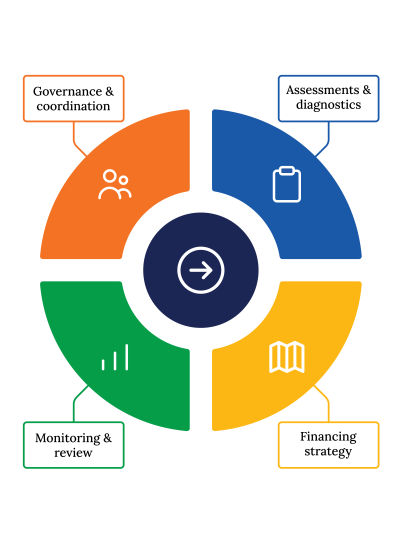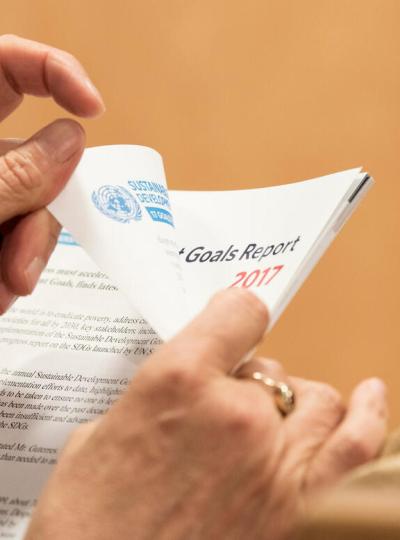Sustainable Tourism Development
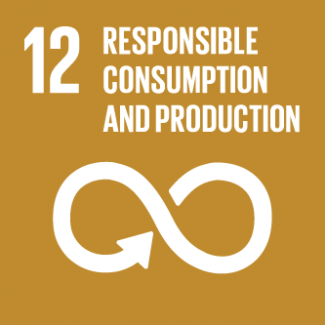
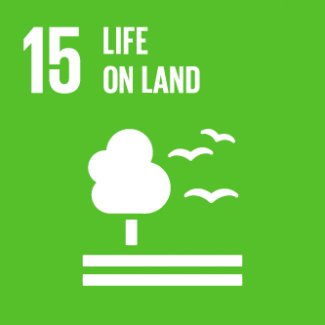
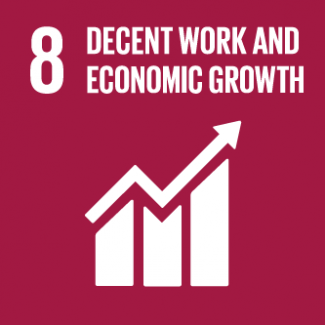
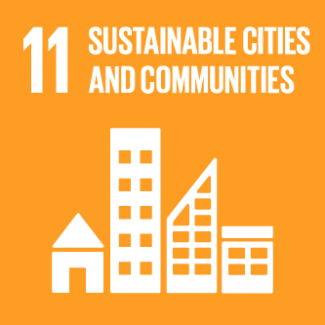
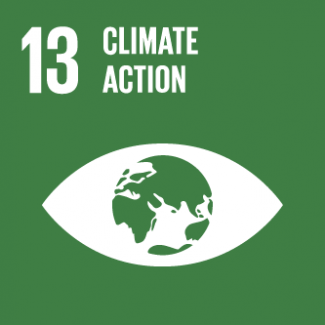
Business Model Description
Create a tourism ecosystem that prioritizes environmental conservation, cultural heritage preservation, and community engagement. By integrating sustainability into every aspect of tourism—from transportation to accommodation—Jamaica can offer unique experiences that appeal to environmentally conscious travelers.
Expected Impact
Create economic opportunities while preserving Jamaica's natural resources and cultural heritage.
How is this information gathered?
Investment opportunities with potential to contribute to sustainable development are based on country-level SDG Investor Maps.
Disclaimer
UNDP, the Private Finance for the SDGs, and their affiliates (collectively “UNDP”) do not seek or solicit investment for programmes, projects, or opportunities described on this site (collectively “Programmes”) or any other Programmes, and nothing on this page should constitute a solicitation for investment. The actors listed on this site are not partners of UNDP, and their inclusion should not be construed as an endorsement or recommendation by UNDP for any relationship or investment.
The descriptions on this page are provided for informational purposes only. Only companies and enterprises that appear under the case study tab have been validated and vetted through UNDP programmes such as the Growth Stage Impact Ventures (GSIV), Business Call to Action (BCtA), or through other UN agencies. Even then, under no circumstances should their appearance on this website be construed as an endorsement for any relationship or investment. UNDP assumes no liability for investment losses directly or indirectly resulting from recommendations made, implied, or inferred by its research. Likewise, UNDP assumes no claim to investment gains directly or indirectly resulting from trading profits, investment management, or advisory fees obtained by following investment recommendations made, implied, or inferred by its research.
Investment involves risk, and all investments should be made with the supervision of a professional investment manager or advisor. The materials on the website are not an offer to sell or a solicitation of an offer to buy any investment, security, or commodity, nor shall any security be offered or sold to any person, in any jurisdiction in which such offer would be unlawful under the securities laws of such jurisdiction.
Country & Regions
Sector Classification
Services
Development need
Jamaica's services sector is vital for economic growth but faces challenges like overreliance on tourism, environmental degradation, and lack of diversification. The COVID-19 pandemic exposed vulnerabilities, with GDP contracting by 10.2% in 2020. Diversifying services and modernizing infrastructure is essential for sustainable development.
Policy priority
The Jamaican government prioritizes economic diversification and resilience-building through digital transformation, renewable energy adoption, and sustainable tourism policies.
Gender inequalities and marginalization issues
Women face limited leadership roles in the services sector, while marginalized groups often lack access to opportunities in tourism.
Investment opportunities introduction
The services sector in Jamaica offers significant potential for sustainable growth, particularly in tourism. Investments in eco-tourism and renewable energy infrastructure align with global trends and national priorities. These opportunities are supported by government policies aimed at fostering green growth and technological advancement.
Key bottlenecks introduction
The services sector in Jamaica offers significant potential for sustainable growth, driven by the country’s strategic focus on diversification and resilience. Opportunities lie in leveraging Jamaica’s natural and human capital to expand beyond traditional tourism
Hospitality and Recreation
Development need
critical for Jamaica's economic development but faces challenges such as environmental degradation, over-tourism, and unequal distribution of benefits. Tourism contributes significantly to GDP and employs over 350,000 people but strains natural resources like water and coastal ecosystems. Addressing these issues is vital for long-term sustainability.
Policy priority
Jamaica’s government prioritizes the development of its hospitality subsector through initiatives like the Hotel Incentives Act and Resort Cottages Incentive Act. These policies enhance infrastructure, and attract foreign investment while promoting linkages with local industries such as agriculture and manufacturing to maximize economic benefits.
Gender inequalities and marginalization issues
The hospitality subsector often excludes marginalized groups, such as women and rural communities, from leadership roles and economic benefits. Women are underrepresented despite their significant presence in the workforce. Policies promoting community-based tourism and equitable hiring practices aim to address these disparities
Key bottlenecks introduction
Challenges include enclave tourism practices that limit local economic benefits, high operational costs (e.g., energy), insufficient infrastructure, and vulnerability to external shocks like natural disasters. Weak enforcement of sustainability standards further hampers long-term development in the hospitality subsector.
Hotels and Lodging
Pipeline Opportunity
Sustainable Tourism Development
Create a tourism ecosystem that prioritizes environmental conservation, cultural heritage preservation, and community engagement. By integrating sustainability into every aspect of tourism—from transportation to accommodation—Jamaica can offer unique experiences that appeal to environmentally conscious travelers.
Business Case
Market Size and Environment
> USD 1 billion
41.4 million gallons of water saved annually through environmental management systems.
Visitor Arrivals: Jamaica welcomed a record 4.3 million visitors in 2024, a significant increase from 4.1 million in 2023, which itself marked a 25.5% rise from 2022. This growth highlights the island’s resilience and appeal as a premier travel destination, driven by expanded airline capacity, new hotel developments, and increasing global interest.
Infrastructure Expansion: Jamaica is adding over 2,000 new hotel rooms by 2026, including major projects like Princess Grand Jamaica and Riu Palace Aquarelle. These expansions are critical for accommodating growing demand and enhancing visitor experiences while driving economic growth
Indicative Return
> 25%
Revenue Growth: Jamaica’s tourism revenue is projected to reach $5 billion by 2025, up from $3.7 billion in 2022. This growth reflects increased visitor arrivals and expanded hotel capacity, driven by investments in the hospitality sector.
Investment Pipeline: investments continue to boom to drive the industry’s recovery, over the last five years tourism investment contributed 20% of the island’s total foreign direct investments (FDI) and over the next 5 to 10 years, there are multiple upcoming investment projects which will see the addition of 15,000 to 20,000 new rooms with investment of US$4 billion to US$5 billion.
Investment Timeframe
Medium Term (5–10 years)
Policy Implementation: Jamaica’s Five-Year Strategic Vision for tourism emphasizes diversification, sustainability, and local economic integration. These initiatives need five to ten years to fully materialize, ensuring policies translate into measurable economic impacts
Sustainability Integration: Adopting eco-friendly practices and certifications across the hospitality sector is a gradual process. Over the next five to ten years, investments in renewable energy and resource efficiency will yield cost savings and attract environmentally conscious travelers
Market Recovery and Expansion: Tourism in Jamaica has rebounded strongly post-pandemic, with arrivals exceeding pre-2019 levels. Sustaining this growth requires medium-term investments in marketing, airlift capacity, and new markets like Europe and Asia
Ticket Size
USD 1 million - USD 10 million
Market Risks & Scale Obstacles
Capital - CapEx Intensive
Market - Highly Regulated
Market - Volatile
Impact Case
Sustainable Development Need
Community Marginalization: Jamaica’s tourism model often excludes local communities from economic benefits, with profits concentrated in large all-inclusive resorts. Local businesses struggle to compete, and community engagement is limited. Baseline data shows that small enterprises account for less than 10% of tourism revenue
Coastal Ecosystem Degradation: Mass tourism has led to severe environmental impacts, including coral reef destruction, beach erosion, and mangrove loss. In Negril, sewage pollution from hotels has degraded coastal waters since the 1970s.
Resource Strain: Tourism inflates population density in resort areas, straining water and energy resources. Jamaica’s hotels consume significant resources, causing service interruptions for locals. Baseline data shows high water demand in resort areas, exacerbating resource scarcity for surrounding communities.
Gender & Marginalisation
Marginalization Issue: Rural Communities: Community-based tourism initiatives often exploit rural landscapes without adequately integrating local populations into economic benefits. Women in rural areas face compounded challenges, including limited socio-economic mobility and reliance on informal labor, deepening class divides
Expected Development Outcome
Environmental Restoration: The IOA addresses coastal degradation by promoting eco-friendly practices, such as renewable energy adoption and water conservation. Programs like the Environmental Management Systems (EMS) have reduced water consumption by over 41 million gallons, contributing to ecosystem recovery
Resilience Building: By prioritizing sustainable tourism strategies, the IOA enhances resilience against external shocks like natural disasters. Investments in infrastructure modernization and resource efficiency ensure long-term economic stability while reducing vulnerability to environmental risks
Gender & Marginalisation
Community Empowerment: Sustainable Tourism fosters economic inclusion through community-based tourism initiatives, empowering marginalized rural communities. This approach generates sustainable livelihoods, preserves cultural heritage, and reduces poverty by integrating local populations into the tourism economy
Primary SDGs addressed

12.b.1 Implementation of standard accounting tools to monitor the economic and environmental aspects of tourism sustainability
12.2.1 Material footprint, material footprint per capita, and material footprint per GDP
The Tourism Satellite Account (TSA) is used in 68 countries, including Jamaica, to track tourism’s economic and environmental impacts.
Achieve full implementation of sustainability monitoring tools across all major tourism destinations by 2030, ensuring environmental and economic impacts are tracked consistently

15.1.1 Forest area as a proportion of total land area
In 2015, Jamaica’s score on the International Union for Conservation of Nature (IUCN) Red List Index (RLI)164 was 0.673. It declined to 0.668 in 2018 and further to 0.665 in 2020 (Indicator 15.5.1). The declining trend suggests that the rate of biodiversity loss should be of concern
By 2020, ensure the conservation, restoration and sustainable use of terrestrial and inland freshwater ecosystems and their services, in particular forests, wetlands, mountains and drylands, in line with obligations under international agreements

8.9.1 Tourism direct GDP as a proportion of total GDP and in growth rate
Tourism contribution to Jamaica’s GDP was 10.5% (2022 data), with projections to reach 13.1% by 2033
By 2030, devise and implement policies to promote sustainable tourism that creates jobs and promotes local culture and products
Secondary SDGs addressed


Directly impacted stakeholders
People
Gender inequality and/or marginalization
Planet
Corporates
Public sector
Indirectly impacted stakeholders
People
Gender inequality and/or marginalization
Planet
Corporates
Public sector
Outcome Risks
Environmental Risks: Sustainable tourism may unintentionally lead to environmental overuse in popular eco-tourism destinations, causing resource depletion and biodiversity stress if visitor numbers are not properly managed.
Social Risks:Over-tourism can commodify local cultures, reducing their authenticity and creating tension between tourists and residents. Rising land values driven by tourism development may displace local communities, exacerbating inequality and social fragmentation
Economic Risks: While sustainable tourism boosts local economies, it may lead to economic dependency on tourism, leaving communities vulnerable to external shocks such as global travel disruptions or natural disasters
Gender inequality and/or marginalization risk: Despite efforts to empower women and marginalized groups, unequal access to resources or decision-making roles in sustainable tourism projects may perpetuate existing inequalities
Impact Risks
External Risk: Unforeseen external factors, such as climate change or global economic shocks, could disrupt sustainable tourism initiatives, exacerbating environmental degradation and reducing community benefits
Stakeholder Participation Risk: Misunderstanding stakeholder expectations, such as local communities’ needs or tourists’ preferences, may result in ineffective implementation of sustainable tourism practices, causing dissatisfaction and limited impact
Drop-off Risk: Positive impacts like ecosystem restoration or community empowerment may not endure if sustainable tourism activities are discontinued due to lack of funding or policy support
Impact Classification
What
Positive outcomes such as environmental conservation, cultural heritage preservation, and community empowerment. It addresses critical issues like biodiversity loss and economic inequality
Who
Beneficiaries are local communities, including underserved rural populations, women, and youth.
Risk
External disruptions like climate change or economic shocks that may hinder sustainable tourism initiatives. Stakeholder participation
How Much
Scale (regional ecosystems and communities), depth (economic inclusion for marginalized groups), and duration (long-term resilience through environmental management systems).
Impact Thesis
Create economic opportunities while preserving Jamaica's natural resources and cultural heritage.
Enabling Environment
Policy Environment
Master Plan for Sustainable Tourism Development (TPDCo, 2016): This plan is a critical policy document, providing a framework for sustainable tourism development across Jamaica. It emphasizes environmental conservation, community involvement, and the integration of sustainability principles into tourism practices.
Vision 2030 Jamaica - National Development Plan: This overarching framework provides a strategic direction for Jamaica’s development, integrating sustainability principles across all sectors, including tourism. The plan underscores the importance of preserving Jamaica's natural resources and cultural heritage, while enhancing the economic benefits of tourism for local communities.
Tourist Board Act : Establishes the Jamaica Tourist Board, which regulates and promotes sustainable tourism development, licensing tourism enterprises, and enforcing standards for tourist accommodations and services.
National Tourism Policy: This policy outlines goals related to sustainable development, community involvement, and environmental protection within the tourism sector. It serves as a guiding document for stakeholders involved in tourism planning and investment decisions (Ministry of Tourism Jamaica).
sustainable tourism, emphasizing environmental conservation and community involvement. Community Tourism Policy and Strategy White Paper (2015): Encourages and guides community tourism development, promoting local economic benefits and authentic cultural experiences
Financial Environment
Hotel Incentives Act: Grants 10-15 years relief from GCT, income tax, and import duty to new hotels, existing hotels adding rooms, and those undergoing substantial structural alterations
Resort Cottages Incentives Act: Offers 7 years relief from income tax and exemptions from Custom Duty/GCT to owners, tenants or operators of resort cottages or groups of resort cottages
Productive Input Relief (PIR) provides certain tourism attraction-related items that would haveattracted customs duties are not required to pay the customs duty and the Additional Stamp Duty (ASD) when purchased for productive use.
Regulatory Environment
The Ministry of Culture, Gender, Entertainment and Sport is the responsible ministry that oversees the cultural and creative industries in Jamaica.
Natural Resources Conservation Authority (NRCA) Act: Enforces environmental regulations, protecting ecosystems from tourism-related degradation.
Beach Control Act: Regulates beach use, preserving coastal ecosystems and tourism appeal.
Ecotourism Guidelines: NEPA provides guidelines for the establishment of river-based attractions, focusing on environmental protection and sustainable practices.
Marketplace Participants
Private Sector
Key private sector actors include the Jamaica Hotel and Tourist Association (JHTA), which promotes sustainable practices like Environmental Management Systems (EMS), and Sandals Resorts International, a leader in eco-tourism initiatives. Other contributors are Island Routes Caribbean Adventures and Chukka Caribbean Adventures, offering eco-friendly tours, and Green Globe Certified Hotels, which implement resource-saving technologies.
Government
Government entities include the Ministry of Tourism, which develops policies like Vision 2030 Jamaica, and the Tourism Product Development Company (TPDCo), which oversees sustainable tourism initiatives. The Jamaica Tourist Board (JTB) promotes Jamaica as a sustainable destination, while NEPA regulates environmental standards. The Tourism Enhancement Fund (TEF) and Development Bank of Jamaica (DBJ) provide financial support for eco-tourism projects.
Multilaterals
Multilateral organizations include the United Nations Development Programme (UNDP), which supports MSMEs in adopting sustainable tourism models, and the Inter-American Development Bank (IDB), funding resilience-focused tourism projects. The Green Climate Fund (GCF) finances climate-resilient infrastructure, while the World Bank supports policy reforms for tourism diversification.
Public-Private Partnership
Public-private partnerships include the EAST Project, a collaboration between USAID and JHTA to implement EMS in hotels, and the Tourism Linkages Network, connecting government and private sector actors to integrate sustainability into tourism development. Partnerships like IDB-TEF co-fund projects to enhance resilience and sustainability in Jamaica’s tourism industry.












